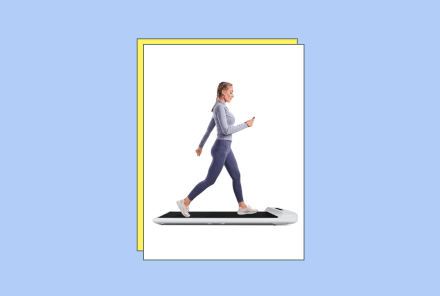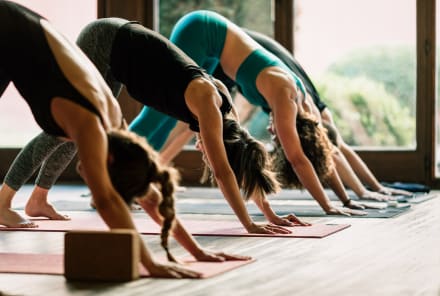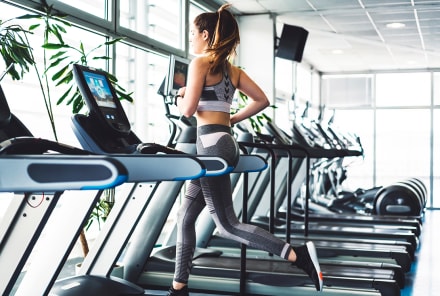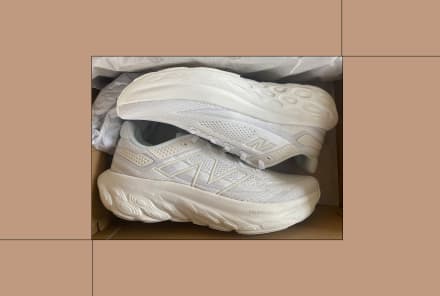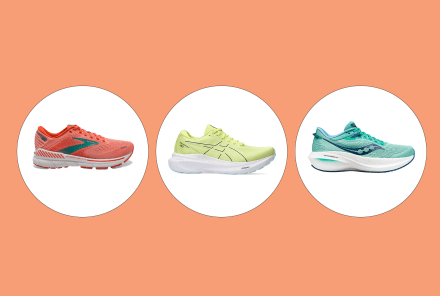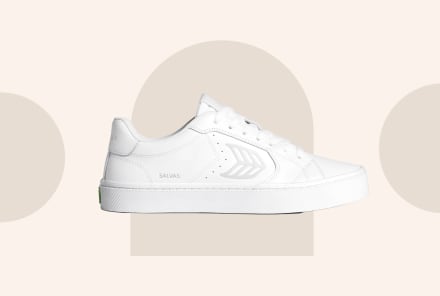Advertisement
The Best Type Of Shoes To Wear (Or Not Wear) During At-Home Workouts

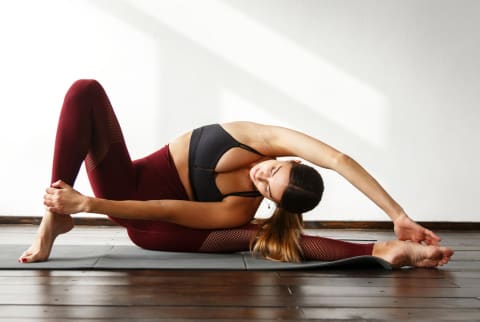
Working out from home has its perks. Getting to the "gym" (aka the yoga mat in your living room) two minutes before the class starts, scheduling and rescheduling of your own accord, and, of course, going barefoot without shame.
As freeing as it is to go barefoot while exercising at home, are there ever circumstances where shoes are necessary? To make sure we're properly supporting our feet, mbg reached out to a few personal trainers. Here's what they recommend when it comes to at-home workout footwear.
Exercises that benefit from shoes.
Family medicine physician and certified personal trainer Michele Reed, D.O., recommends wearing athletic training shoes to provide support and/or protection for the feet during exercises that involve jumping or other high-impact movements. "If you will be doing any type of cross-directional movements, these will give you the best fit," she says. At-home exercises that benefit from sneakers include:
- HIIT workouts
- Tabata
- Cardio circuits
- Weight training (sometimes)
In most cases, it's totally fine to weight train without shoes, because it doesn't involve high-impact pounding. That said, "You always run the risk of dropping a weight on your feet, which doesn't feel good," personal trainer Todd McCullough, ACE-CPT, E-RYT, tells mbg. If you're not comfortable lifting weights or you're lifting a heavy weight, it may be a good idea to wear close-toed shoes.
Other reasons you may want shoes.
Aside from the type of workout, certain injuries or sensitive spots may call for wearing supportive shoes. For example, injuries like turf toe (a sprain in the main joint of the big toe), twisted ankles, or knee injuries, may warrant sneakers. "A shoe will help lessen the pain and allow you to still crush a workout," McCullough says.
Many at-home workouts incorporate plyometrics, or jump training, to get the heart rate up. While that targeted effect is beneficial, the impact can be harmful to people with tendinitis in the knee—but wearing shoes can help, he explains.
Exercises that are fine barefoot.
Most workouts actually benefit from the barefoot approach. In fact, Reed says, "When going barefoot, it helps to strengthen the muscles of the feet" since the force of your movement isn't absorbed by your sneakers. Strengthening the feet then increases the strength of the core, hips, and legs, as the body becomes more aware of its changing positions and activates surrounding muscles to help stabilize the body, she explains. At-home exercises that work without sneakers include:
- Yoga
- Pilates
- Mobility movements and stretches
- Strength training (squats, lunges, core work, etc.)
- Barre
- Dance
To make sure your feet are still getting the support they need without shoes, Reed says, "Your feet should be dry and without socks." Slipping all over the place? Personal trainer Jason Williams, NASM-CPT, says grippy socks will do the trick.
Why does it matter?
Improperly supporting your feet can lead to injuries, like strains, sprains, blisters, tendonitis, and plantar fasciitis to name a few, Reed says. If you've developed any of those injuries from neglecting your feet in the past, consider buying a supportive new pair of sneakers and using them when appropriate. These juicy foot and ankle stretches may help, too.
Watch Next
Enjoy some of our favorite clips from classes
Enjoy some of our favorite clips from classes
What Is Meditation?
Mindfulness/Spirituality | Light Watkins
Box Breathing
Mindfulness/Spirituality | Gwen Dittmar
What Breathwork Can Address
Mindfulness/Spirituality | Gwen Dittmar
The 8 Limbs of Yoga - What is Asana?
Yoga | Caley Alyssa
Two Standing Postures to Open Up Tight Hips
Yoga | Caley Alyssa
How Plants Can Optimize Athletic Performance
Nutrition | Rich Roll
What to Eat Before a Workout
Nutrition | Rich Roll
How Ayurveda Helps Us Navigate Modern Life
Nutrition | Sahara Rose
Messages About Love & Relationships
Love & Relationships | Esther Perel
Love Languages
Love & Relationships | Esther Perel
